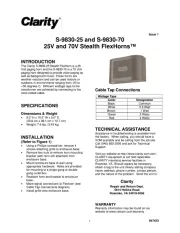Proel Flash 5A V2 Handleiding
Bekijk gratis de handleiding van Proel Flash 5A V2 (3 pagina’s), behorend tot de categorie Speaker. Deze gids werd als nuttig beoordeeld door 68 mensen en kreeg gemiddeld 4.3 sterren uit 34.5 reviews. Heb je een vraag over Proel Flash 5A V2 of wil je andere gebruikers van dit product iets vragen? Stel een vraag
Pagina 1/3

R&D Department
Testing Procedure
From PROEL R&D DEPT.
To PROEL SERVICE DEPT.
Object FLASH5 - A amplifier module TESTING PROCEDURE
Date 30 /20/04 14
Instruments required:
1) Sinusoidal audio signal generator
2) 100MHz or more dual trace oscilloscope (scope)
3) True RMS digital multimeter (DMM) with dBu scale
4) 250W or more Variac transformer with 0 250 Vac range (230V european version)-
or with 0- 140 Vac range (120V US version)
5) 4 Ω 1 00W or more resistive load
6) 8 Ω 5 0W or more resistive load
7) Music and pink noise signal generator (CD player)
IMPORTANT: The oscilloscope must be insulated from the earth ground.
1. Set up
- Check the correct earth main connection on the rear surface of the front panel.
- Check the insulation between the heat sink and the case of IC4, IC5 and IC3.
- Set the LINE LEVEL control full clockwise.
- position. Set the NEARFIELD/MIDFIELD button in NEARFIELD
- Switch OFF the amplifier module.
2. Low amplifier check
- Connect the mains of amplifier module to VARIAC and set it at zero AC voltage.
- Connect the scope CH1 GND clip to P8 black wire/faston (GND), scope CH1 probe tip to P6 red wire/faston
( ) LOW OUT and scope CH2 probe tip to P10 black wire/faston (HIGH OUT).
- Switch ON the amplifier module.
- Increase slowly the VARIAC voltage up to the nominal value (230Vac or 120Vac).
- Check the transformer secondary voltages with DMM (without signal on input):
52 ±2 Vac between red wire
32 ±2 Vac between yellow wire
- -Using DMM check also the +15Vdc / 15Vdc supplies on relative voltage regulator outputs (IC4 & IC5
devices).
- . Connect the signal generator to LINE INPUT (XLR/JACK socket) and set it at 100 Hz, -10 dBu
- . Verify that CH1 (LOW OUT) signal is 30V ±6 Vpp
- Check of SIGNAL/LIMIT LED function, moving the volume potentiometer of the amplifier;
when the output signal is < 2 Vpp the led must be OFF
when the output signal is > 2 Vpp, the led must be GREEN.
- lockwise. Rotate the volume potentiometer knob fully c
- u. Set the signal generator at 0 dB
- t Connect he 4 Ωload resistor at LOW OUT and verify that the signal is symmetrical refer to GND, without
detectable distortion and oscillation.
1

- Remove signal from XLR Input.
- . Connect the signal generator to LINE INPUT (RCA socket) and set it at - u20 dB
- . Verify that low amplifier output signal is 28V ±6 Vpp
a - - -NOTE: the low amplifier is designed with class D half bridge self oscillating amplifier around the
IRS2092 ic, to see in detail how this amplifier works consult IRS2092 data sheet and related application
notes available on International Rectifier website (www.irf.com). The low amplifier oscillating frequency
is in the range of If there is a problem in the nested loop the amplifier doesn’t oscillate: 400-420 KHz.
switch off then check TR6. –If the mosfets isn’t fault check the voltage, using the DMM, between VCC
and pin 3 of IC2 (7812), this is the voltage regulator of low side mosfet driver, if this regulator doesn’t
work the amplifier doesn’t oscillate.
3 . COMPRESSOR check of LOW amplifier
- Increase the signal at +10 dBu and check that the output signal remains constant at 40 ±4 Vpp. Check that
the SIGNAL/COMP LED . has changed the colour from GREEN to RED
- Disconnect the 4ohm load resistor from the LOW amplifier output.
6. HIGH amplifier check
- Connect the signal generator to LINE INPUT (XLR/JACK socket) and set it at 10 KHz , 0 dBu.
- Verify that the CH2 (HIGH OUT) signal is symmetrical referring to GND, without detectable distortion and
oscillation.
- Connect the 8 Ωload resistor at LOW OUT and check that the HIGH amplifier output signal is limited to 20
±3 Vpp.
7. X- OVER check.
- Disconnect all resistive loads and set the signal generator to -10 dBu.
- Sweep the frequency and check that the LOW amplifier power out signal level is as the 1a plot and HIGH
frequency amplifier power signal level is as 1b plot.
- Set the NEARFIELD/MIDFIELD button in MIDFIELD position.
- Sweep again the frequency and check that the LOW amplifier power out signal level is as the 2a plot and
HIGH frequency amplifier power signal level is as 2b plot.
1a
1b
2

8: Burn in
- . Connect to the LINE input of the amplifier module the 3:1 pink noise source
- Connect a 4 Ω 100W resistive load to the LOW amplifier output.
- Connect a 8 5Ω0W resistive load to the HIGH amplifier output.
- Switch ON the amplifier module.
- Increase the pink noise level until the SIGNAL/LIMIT LED is flickering in RED/GREEN light.
- Hol - . d the amplifier in vertical position and run the burn in test for 2 hours min
9: Final acoustic check
- - After the burn in test, the amplifier module must still work properly. An acoustic or electric test
(with speaker box and audio signal) is needed to verify this condition.
2a
2b
3
Product specificaties
| Merk: | Proel |
| Categorie: | Speaker |
| Model: | Flash 5A V2 |
Heb je hulp nodig?
Als je hulp nodig hebt met Proel Flash 5A V2 stel dan hieronder een vraag en andere gebruikers zullen je antwoorden
Handleiding Speaker Proel

21 Juli 2025

21 Juli 2025

16 November 2024

16 November 2024

16 November 2024

18 Augustus 2023

8 Juli 2023

24 Juni 2023

21 Juni 2023

20 Juni 2023
Handleiding Speaker
- Electrohome
- SoundCast
- NAD
- Denon DJ
- Edenwood
- PulseAudio
- Naxa
- Omnitronic
- Audison
- NUVO
- Korg
- Theater Solutions
- Mackie
- Kali Audio
- Vimar
Nieuwste handleidingen voor Speaker
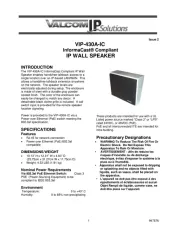
1 Augustus 2025
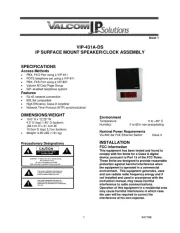
1 Augustus 2025

1 Augustus 2025
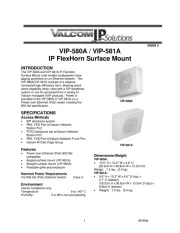
31 Juli 2025
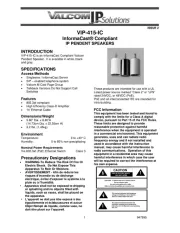
31 Juli 2025
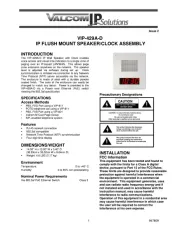
31 Juli 2025
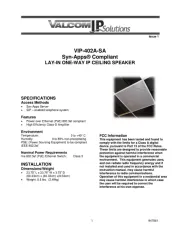
31 Juli 2025
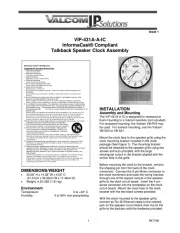
31 Juli 2025
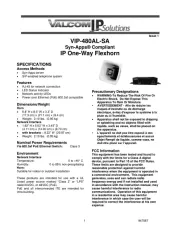
31 Juli 2025
